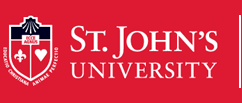ORCID
https://orcid.org/0000-0002-0723-4411
Date of Award
2022
Document Type
Thesis
Degree Name
MS in Pharmaceutical Science
Department
Pharmaceutical Sciences
First Advisor
Saurabh Agarwal
Second Advisor
Vikas Dukhande
Third Advisor
Sunil Kumar
Abstract
High-risk neuroblastoma (NB) is an aggressive pediatric tumor which develops from the extracranial sympathetic nervous system and accounts for almost 15% of all childhood cancer-related deaths. Current therapies include high-dose chemotherapy and radiation which have long-term toxic side-effects. Despite these intensive therapies, the overall survival rate of NB is less than 50%. Therefore, developing novel therapeutic approaches by directly targeting the molecular mechanisms that drives NB progression is very important. In the present study, we analyzed genomic datasets of 1235 NB patients and discovered that overexpression of survivin coding gene BIRC5 strongly correlates with poor overall and event-free survival of NB patients, and more aggressive tumors have significantly higher BIRC5 levels. Survivin belongs to the inhibitor of apoptosis protein family and is known to be involved in controlling cell division and apoptosis. Oncogenic activation of survivin has been reported in different cancers including NB. To further understand the role of survivin in NB, we repurposed a survivin inhibitor YM-155. Cell viability assays in six NB cell lines demonstrated the potency of YM-155 in significantly inhibiting NB cell proliferation. Additionally, clonogenic and 3D-spheroid formation assay results showed that YM-155 significantly inhibits colony formation and 3D-spheroid size respectively. Furthermore, apoptosis and cell cycle assays in different NB cell lines in response to increasing concentration of YM-155 revealed significantly higher apoptosis and blockage of cell cycle progression in comparison to control treatments. Molecular assays including gene expression profiling and Western blotting further confirmed that YM-155 directly inhibits survivin at both mRNA and protein levels in NB. To further develop an effective therapeutic approach, we combined YM-155 with the chemotherapy drug etoposide. This dual therapy combination revealed that YM-155 synergistically sensitizes NB to chemotherapy treatment. Overall, our pre-clinical data demonstrates that repurposing YM-155 and combining it with current therapies is a novel, less-toxic, and more-effective therapeutic approach for NB.
Recommended Citation
Rouse, Danielle Crystal, "REPURPOSING OF SMALL MOLECULE INHIBITOR YM-155 INHIBITS HIGH-RISK NEUROBLASTOMA GROWTH BY DIRECTLY INHIBITING SURVIVIN PROTEIN" (2022). Theses and Dissertations. 381.
https://scholar.stjohns.edu/theses_dissertations/381
